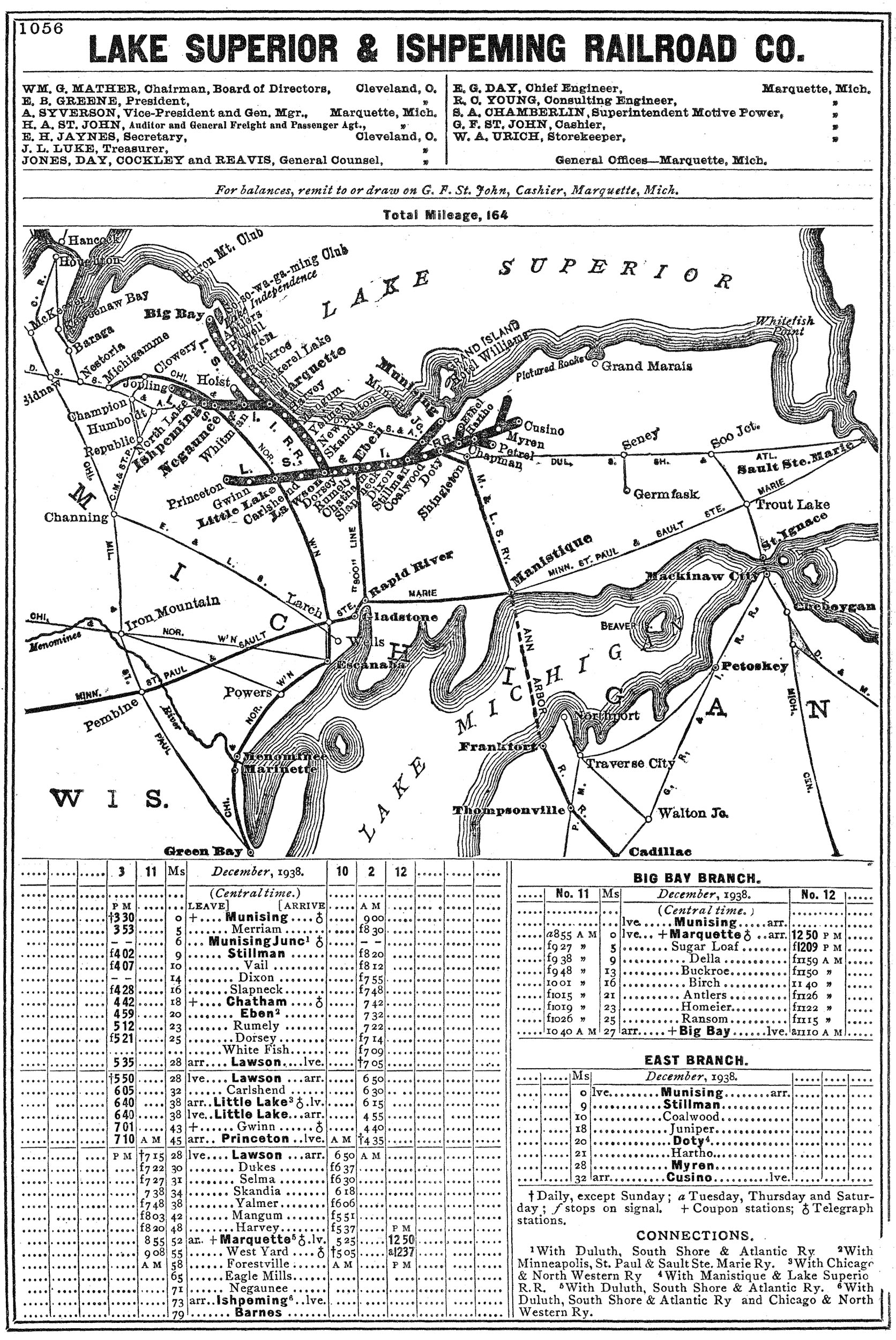|
Munising, Marquette & Southeastern |
Evelyn |
Michigan |
At Evelyn, on the South Shore (DSS&A), another interlocking plant of the LS&I once controlled the crossing at grade of these railroads. It was called Doty on the latter railroad.
Doty is a locale at the junction of the former Marquette and Eastern Railway(now the Lake Superior and Ishpeming Railroad) and the Duluth, South Shore and Atlantic Railway (now the Soo Line Railroad) at 46°21′46″N 86°32′07″W / 46.36278°N 86.53528°W.[3] It was named after Marcus A. Doty, a manager for the Marquette & Eastern. The station is called Evelyn on the Soo Line.[4]
Shingleton is an unincorporated community at 46°20′54″N 86°28′13″W / 46.34833°N 86.47028°W, about ten miles (16 km) southeast of Munising, at the eastern junction of M-28 and M-94. West of Shingleton, M-28 and M-94 run concurrently until about a mile south of Munising. The ZIP Code is 49884. Shingleton was a station on the Detroit, Mackinac and Marquette Railroad named "Jeromeville" in 1882, after David H. Jerome, then the governor of Michigan (1881-1883). A post office was established in 1887 named Shingleton, after the local shingle mill.[4][13]
[4] Romig, Walter (1986) [1973]. Michigan Place Names. Detroit, Michigan: Wayne State University Press. ISBN 0-8143-1838-X.
[13] U.S. Geological Survey Geographic Names Information System: Shingleton

The Lake Superior and Ishpeming Railroad dates back to 1892 as the Lake Superior & Ishpeming Railway and a subsidiary of the Cleveland-Cliffs Iron Company, which has not changed to this day. The original line between Presque Isle (Marquette) and Ishpeming was completed in 1896 to iron ore from the ranges near Ishpeming to the Lake Superior docks. Two other systems would also become part of the LS&I to expand its length in the peninsula region. In 1895 the Munising Railway Company was chartered to build a line between the Lake Superior port town of Munising to Princeton, roughly 30 miles south of Marquette, and a branch from Stillman to Cusino (southwesterly of Munising).
The other railroad was the Marquette and South Eastern Railway Company, which built a line in 1900 between Big Bay (north of Marquette) and Lawson, a distance of about 60 miles. In 1911 these two systems merged to form the Munising, Marquette and South Eastern Railway Company, which in 1923 merged with the LS&I to form the Lake Superior and Ishpeming Railroad. What resulted was a 173 mile system that stretched as far north as Big Bay, as far west as Ishpeming, and as far east as Munising and Hartho. At one point the railroad extended even further to a logging site called Sunrise Landing tapping additional timber reserves (this line was later cut back and abandoned in either the 1970s or early 1980s). This new system also had numerous connections with large Class 1 systems like the Soo Line, Chicago & North Western and later the Milwaukee Road once the LS&I had built a branch to Republic, Michigan in the 1950s.
While ore was virtually always the Lake Superior and Ishpeming Railroad’s primary source of traffic it also was able to garner other traffic, such as pulpwood along its eastern lines. Today, much of the 170+ mile system has been abandoned or sold off as mining operations and/or traffic in general has dried up over the years. However, you can still catch LS&I trains moving regularly every day from Marquette westward to the Empire Mines and City of Ishpeming (the railroad also moves Ferrel Gas in Negaunee, Michigan.)

|
|